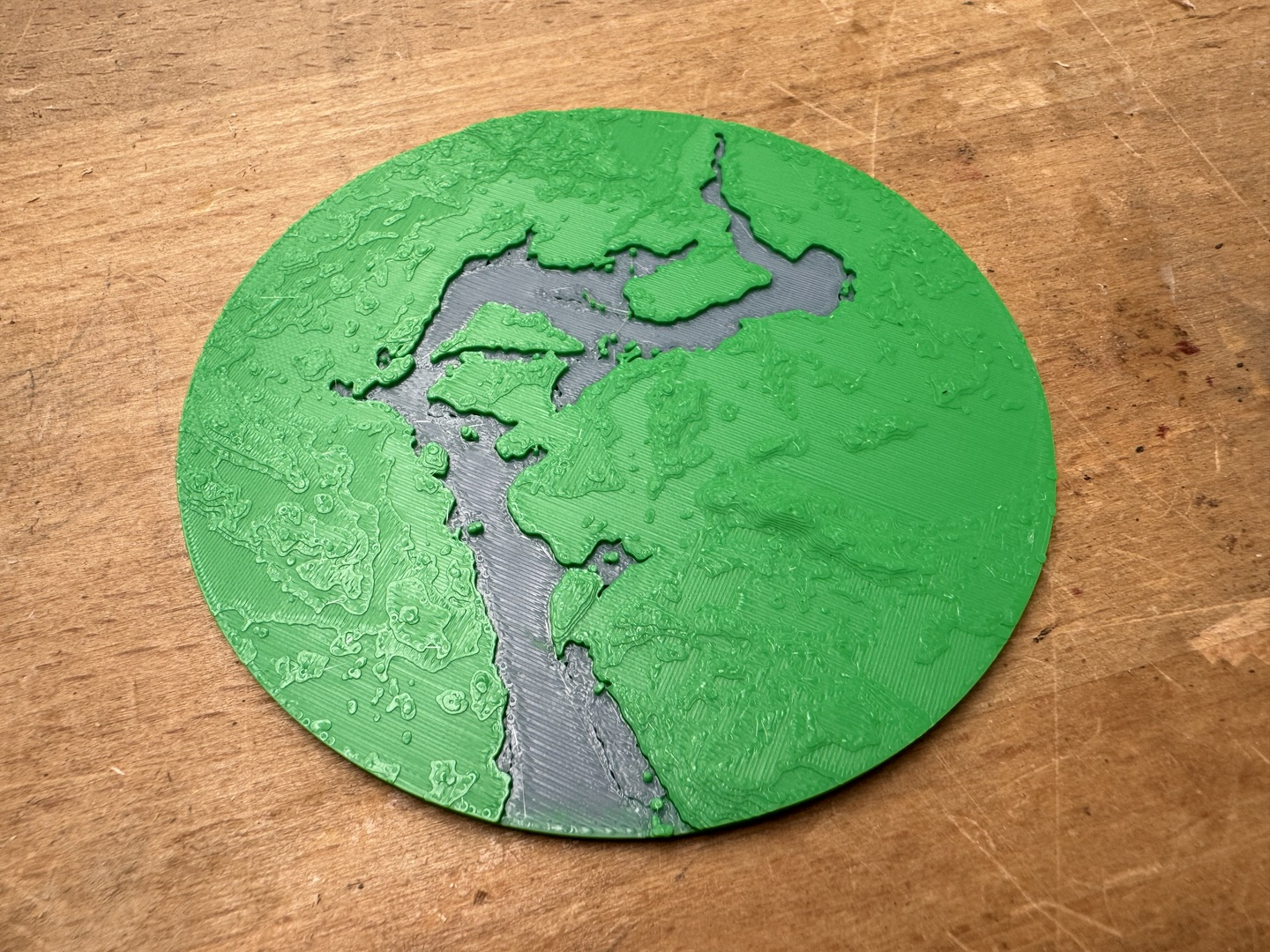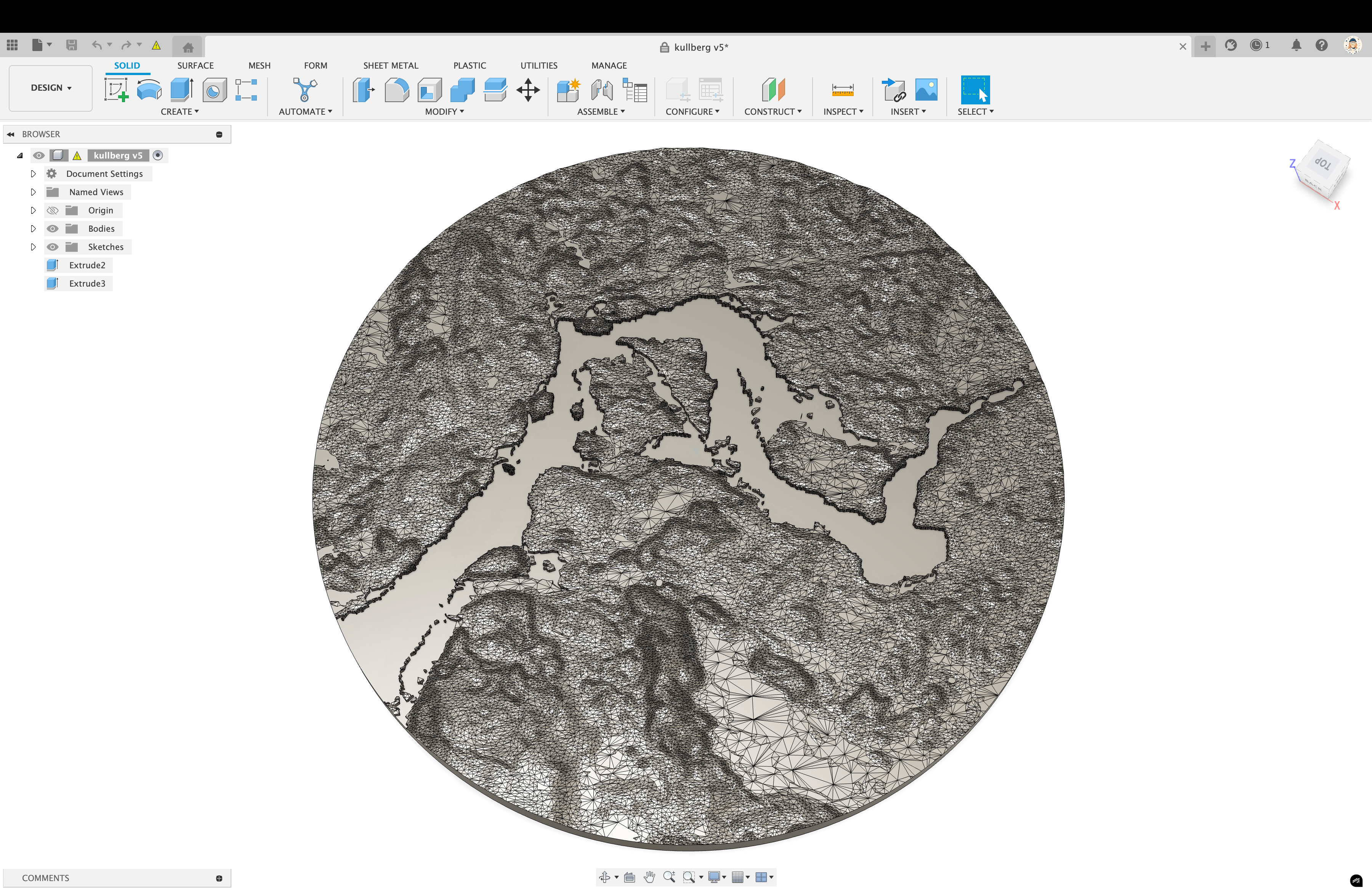3D printing the planet (or bits of it)
This is an idea proposed in 2025 as a good starter project, and is currently being worked on by
Thanks to a combination of
In recent work,

However, this method is not easily scalable as:
- The data sets involved are cumbersome in size.
- The resulting meshes are very detailed, causing even professional grade CAD Software to struggle.
- Raw data does not normally work out of the box for visualisations as 3D-model. For example, water levels have to be added, and often the height has to be accentuated to make it look realistic to our eyes.

There are some general tools that can help with this, but they don’t support adding custom data layers in that would allow us to project data-science results onto a physical surface, and nothing that is open-source that others can readily work with.
The summer project
We’d like to build a simple workflow based around open source tools such as Python, GDAL, and optionally QGIS, to take geospatial results from ecologists and render them ready for 3D-printing. The goal is to make it trivial for ecologists to combine datasets and render them physically without having to become experts in 3D-modelling.
In this project we’d like to:
- Use off the shelf Python libraries to select datasets, and covert them to 3D-meshes
- Provide a way to generate multi-colour meshes for use with the Bambu Carbon printers that we have access to which support up to 8 colours of filament
- Test it using one of the active projects in the group, such as the LIFE global extinction risk maps
We'll have access to 3D printers in the Cambridge Makespace, so this is a good project for a student who wants to get into the nitty-gritty of making things!